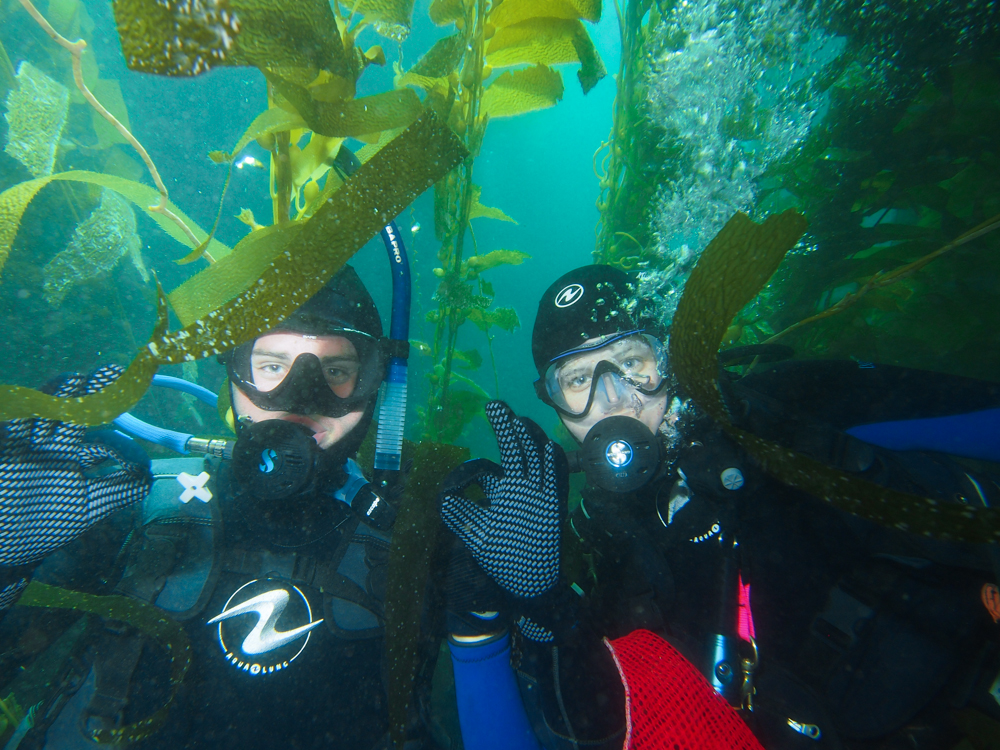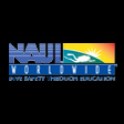Current At Santa Rosa Island 4/18/15
Diving in the kelp forest at Santa Cruz Island.
“The current is pretty strong, but you should be able to make it,” James, a Peace crew deckhand, reported back after jumping into the water at our first dive site. We were outside Nunya Reef at Santa Rosa Island.
Thomas explained that we would make our giant stride off the bow, stepping as close to the anchor line as possible, and swim for the line. If we couldn’t immediately grab hold, we would be swept toward the back of the boat where we would have to abort the dive and board the swim step. I had no practice swimming in current, but I was determined to get to that anchor line.
Once I dropped into the water, I felt the current rip at me immediately. Visibility was low but I could see the anchor line and I kicked for it. Still, it remained just out of my reach and I was exerting too much energy, burning too much air. The idea of aborting the dive was crushing, I was so close. In one last-ditch effort, I kicked harder and threw my arms out in front of me. Megumi, one of my assistant instructors, was hanging on the line and my hands grazed her fin. I grabbed hold. I was worried that I’d yank her right off the line, but hopeful that she might be able to pull me to it.
She turned her head and grabbed my arm, guiding me as I continued to kick and finally my fingers wrapped around the rope. Once I was secured on the line I laughed into my regulator. It was so fun to hang on and let the current blow my body out behind me like a windsock. As I relaxed, my breathing slowed, and I descended the line after Megumi.
Down at the bottom, the current was calmer and we had a chance to explore the reef. The visibility was about fifteen feet. Once I let go of the anchor line I saw that my entire group had made it! We were seventy feet deep and soon it was time to ascend back up the line. I was a lot more comfortable with the pull of the current on my way up, enjoying the power of it, it was an exciting thing to behold.
There is nothing like a hot meal to recharge a group of divers. Courtesy of Peace crew chef Steve, the Ocean Safari Dive Team enjoyed a fresh breakfast as we made our way to Santa Cruz Island for our next dive.
I plunged into the water after Megumi and met up with my buddy and the rest of my group at fifteen feet. At a depth of fifty feet, we began exploring the underwater rock formations. I watched Thomas shine his light into one of the crevices, but I couldn’t see what he was looking at. He grabbed my arm and pulled me closer, and I followed the direction of his light as I swam inside. I thought that he might be showing me a lobster or eel, but when I got in closer I came face to face with a beautiful horn shark (Heterodontus francisci). I’d never seen a shark outside of an aquarium before, it was enthralling.
Back on the boat once again, we enjoyed some of the luxuries only found on the Peace. Divers warm up in-between dives by pouring hot water from the boats jacuzzi down their wetsuits! Our captain dropped anchor at Bowen Point, on Santa Cruz island for our third dive. I kept my buddy close and followed Thomas, but soon we realized that our group was missing two divers. We searched for them briefly underwater before ascending to the surface. My buddy and I took a compass heading before descending and heading back to the boat.
Despite getting separated underwater, the missing divers navigated their way back and we all rendezvoused on the boat before our captain pulled up the anchor a third time and moved us to Pink Ribbon Boilers, our last dive site of the day, on Santa Cruz island. Before jumping off the boat, my buddy and I took a compass heading and then performed our direct descent. We explored through the kelp and saw California Garibaldi (Hypsypops rubicundus), urchins (Centrostephanus coronatus, Strongylocentrotus purpuratus, Strongylocentrotus franciscanus), sea cucumber (Parastichopus californicus), sea hares (Aplysia californica), schools of blacksmith (Chromis punctipinnis), and sand dollars (Echinarachnius parma).
As part of Ocean Safari’s NAUI Advanced Open Water Certification course, my instructors guided me through challenging conditions and helped me to progress my level of skill and competence under water. Back on board I logged my dives and relaxed in the hot tub as the Peace made its way back to the harbor, taking the Ocean Safari Dive Team back home.
Written by Sara Hall






























